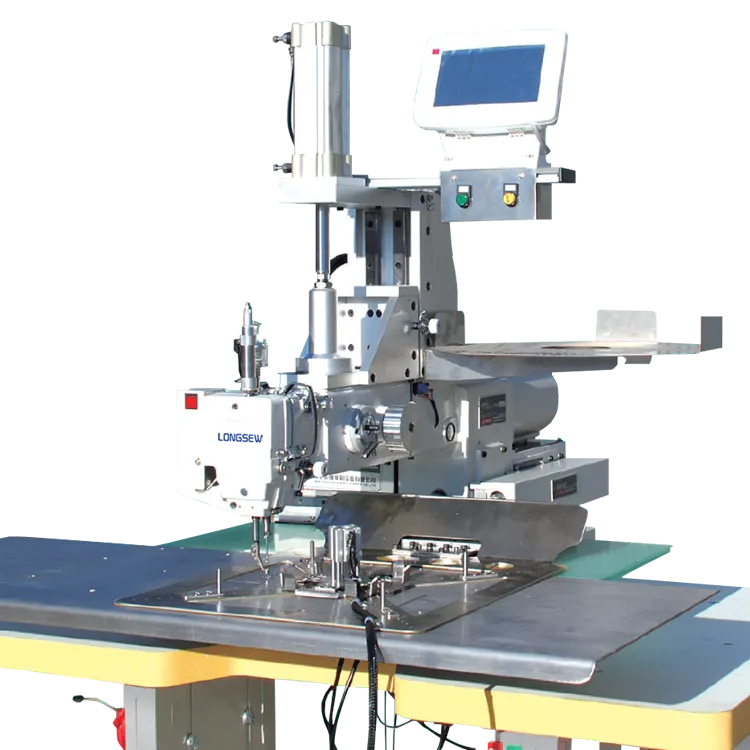twin needle foot
Exploring the Twin Needle Foot A Guide for Sewing Enthusiasts
Sewing has long been a beloved craft, bridging the gap between creativity and practicality. Among the myriad of tools available to sewists, the twin needle foot stands out as an essential accessory for those looking to elevate their sewing projects. In this article, we will explore the features, benefits, and techniques associated with the twin needle foot, as well as tips to help you use it effectively.
What is a Twin Needle Foot?
A twin needle foot is a specialized presser foot designed for use with a twin needle, which has two needles attached to a single shank. This foot allows for dual stitching, creating parallel rows of stitches simultaneously. It is particularly useful for decorative sewing, adding a professional touch to hems, and creating pintucks, as well as for sewing stretch fabrics with ease.
Benefits of Using a Twin Needle Foot
1. Professional Finishing One of the primary advantages of using a twin needle foot is its ability to create a polished look. This foot allows for perfectly spaced rows of stitches, which can enhance the aesthetic quality of your garments. Whether you're finishing hems or adding details to quilts, the twin needle creates a sophisticated finish that is hard to achieve with a single needle.
2. Time Efficiency By simultaneously stitching two lines, the twin needle foot can save a significant amount of time, especially when working on larger projects. This feature is ideal for sewing enthusiasts who value efficiency without compromising on the quality of their work.
3. Versatility The twin needle foot is compatible with various fabrics, making it a versatile tool in your sewing kit. From knits to wovens, the twin needle can handle a variety of materials, allowing for experimentation with different textures and patterns.
twin needle foot

Techniques for Using the Twin Needle Foot
To get the most out of your twin needle foot, it is essential to familiarize yourself with the techniques involved. Here are some tips to help you get started
1. Choosing the Right Needle Twin needles come in various sizes and types. Select a needle size appropriate for your fabric type. For instance, a finer needle is recommended for lightweight fabrics, while a thicker needle is better suited for heavier materials. Additionally, you can choose between standard and ballpoint needles, depending on the type of fabric you are working with.
2. Adjusting Your Machine Settings Before you start sewing, ensure your sewing machine is set up correctly. Use a straight stitch setting, as a zigzag stitch will cause the needles to hit each other and can lead to breakage. Also, adjust the tension to suit the fabric you’re using; this may require some trial and error.
3. Preparing Your Fabric To achieve the best results, it’s vital to properly prepare your fabric. Use a stabilizer for lightweight or stretchy fabrics to prevent puckering. Ensure your fabric is smooth and flat before you begin sewing, as this will help maintain even stitches.
4. Sewing Technique When sewing, maintain a steady speed and allow the fabric to feed naturally through the machine. Avoid pulling or pushing on the fabric, as this can distort the stitches.
Conclusion
The twin needle foot is an invaluable tool for both novice and experienced sewists looking to enhance their projects. With its ability to produce professional-looking results in less time, it opens up a world of creative possibilities. Whether you are creating decorative details or finishing hems, mastering the twin needle foot can significantly expand your sewing repertoire. So, gather your tools, choose your favorite fabric, and experiment with the twin needle foot to take your sewing to the next level!
-
Leather Sewing Machine: The Industrial Standard for Tough MaterialsNewsJul.18,2025
-
Sail Making Machine: Heavy-Duty Stitching for Industrial and Marine NeedsNewsJul.18,2025
-
Sling Sewing Machine: The Backbone of Heavy-Duty FabricationNewsJul.18,2025
-
Leather Sewing Machine: Precision for Heavy-Duty StitchingNewsJul.18,2025
-
Big Bag Sewing Machine: Powering the Future of Bulk PackagingNewsJul.18,2025
-
FIBC Sewing Machine: Essential Equipment for Bulk Bag ProductionNewsJul.18,2025
-
Heavy Duty Leather Sewing Machine: A Must-Have for Professional LeatherworkNewsMay.28,2025





























